Option #2 - Drilling the thumb hole first
1 1) Draw center line and midline of grip
2) Dividing the span of the middle finger in half, draw the span line for the thumb hole
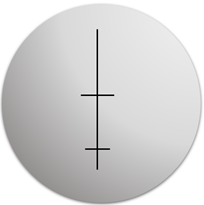
3) Select correct drill bit for the thumb hole
4) Set the correct pitches
5) Align the drill bit so that the tip of the bit is on the centerline and the front of the bit just touches the span line
6) Drill thumb hole
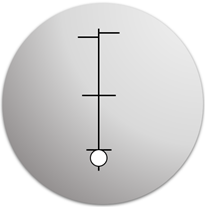
7) Using a span ruler accurate to 1/16”, place the clip on the front edge of the thumb hole
8) Refer to the spec sheet for span measurements
9) If installing finger inserts, measure the thickness of the front edge of the insert and subtract that amount from the total span (Example: the total span is 4 1/2” and the insert is 3/16” then the edge to edge or cut span is 4 5/16”)
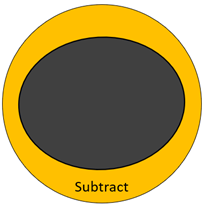
10) Measure from the front edge of the thumb hole to a point 1/2” to the left and 1/2” to the right of the centerline, and mark the span lines
11) Draw bridge lines (1/4” for fingertip w/inserts, 3/8” for conventional)
12) Select the correct drill bit and set the pitches for the middle finger
13) Align drill bit so that the edge of the drill bit is set to just touch the span line and the bridge line.
14) Drill hole for middle finger. 1 1/2” deep for fingertip w/inserts and 2 1/4” deep for conventional
15) Repeat steps 12 – 14 for the ring finger hole
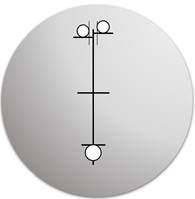
16) Bevel finger holes and install the inserts if necessary
Drilling oval holes
Many thumbs are not round, and drilling an oval hole can give those customers a more comfortable and more useful fit
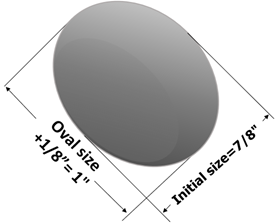
As an example, a customer’s thumb is 7/8” from front to back but is 1” from side to side
1) Set the correct pitches for the pilot hole (first cut) of the oval
2) Select the starting bit (should be the same as the front to back measurement of the thumb)
3) Drill the pilot hole
4) Move the table according to the calculations that Spectre has given you and make the next cut
5) Continue the procedure until you have made the final cut and confirm the correct side to side measurement with a calipers

6) Make sure to follow the movements calculated by Spectre to assure the smoothest oval with the least amount of finishing work
Finishing work
Beveling
Beveling is a procedure that is very important in making sure that every ball for the same bowler feels the same. Different amount of bevel can make the span feel either longer or shorter, therefore it is important to practice for consistency
It is recommended that you use a brand new sanding disk with every ball you do. This will make it easier to be more consistent
Finger Inserts
Finger inserts must be glued into the ball by rule so that they will not fall out and they are flush with the surface of the ball. Good technicians should be able to glue the grips in effectively with only 3 or 4 drops of super glue placed properly
Thumb slugs and Interchangeable thumb inserts
The majority of higher level bowlers will use either a slug or an interchangeable thumb insert to give them a more consistent feel from one ball to another. When using a slug or an interchangeable insert, double check your math to make sure that you end up with the correct span after it is installed
